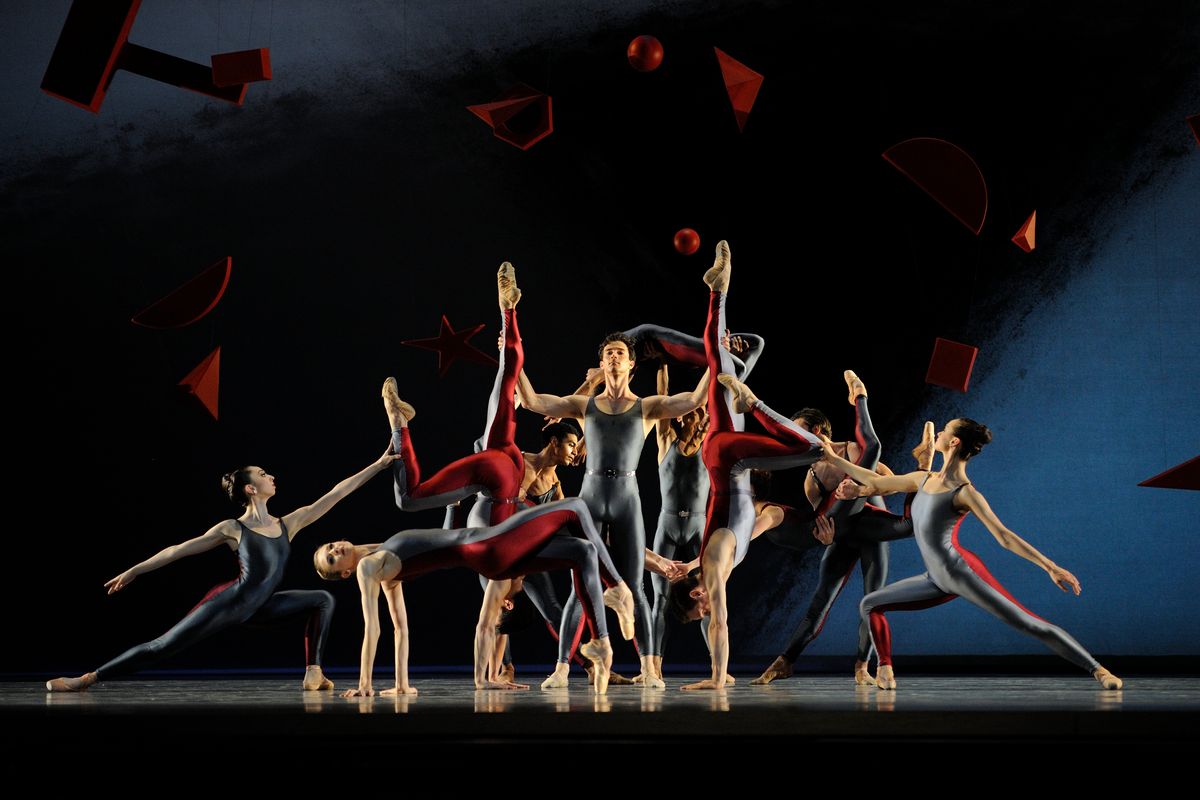Ballet's Not Dead: Here's Why It's Alive and Thriving
This story originally appeared in the December 2014/January 2015 issue of
Pointe.
How long has the “ballet is dead” movement been plaguing us? How long have we swatted away such a preposterous conceit, much as we might swat a pesky mosquito? This obituary has been inflicting annoyance at least since the late 1950s. But the assertion has always come as a surprise to the thousands of dancers who have raised technical standards to unimagined heights a generation ago. The statement has always astonished ballet company directors around America who have watched their audiences grow over the decades. No corpse has ever seemed giddier.
Even Jennifer Homans, who famously declared ballet a doomed art in her 2010 book Apollo’s Angels, is reconsidering her position. Her announcement this fall that she has founded The Center for Ballet and the Arts at New York University suggests that she is prepared to question ballet’s viability and to restore life to the art form.
But let’s be clear about what we’re talking about. Ballet as a technique, as an esthetic, as a codified series of movements and gestures that idealize the proportions of the body, will probably never die as long as evolution grants humankind legs to leap. The death of ballet as an art form? Well, that’s a more contentious issue.
Ballet, simply, is a language, and it survives as long as the body communicates it. Ballet is not one of those languages that goes extinct when the only person still speaking it expires at 103. The mistaken belief that the elaborate vocabulary and adherence to rules that are part of ballet’s beauty somehow mitigate against the pure, unfiltered instinct of the moving body is still propounded (verbally and otherwise) by a segment of the public. The charge of elitism which—considering ballet’s rise in the 17th-century court of King Louis XIV—has some validity, won’t go away.
 Amy Seiwert leading rehearsalScot Goodman, Courtesy Seiwert
Amy Seiwert leading rehearsalScot Goodman, Courtesy Seiwert
But we don’t live in courtly times, and it is, ultimately, the uses to which the ballet lexicon is put that matters most. The rise of postmodernism, more specifically, the Judson Dance Theater, found ballet accused of artificiality and fustiness. Yet although ballet is based on universal principles, it has been a dance form susceptible to evolution. Our own era has seen classical dance twisted, spindled, deconstructed and ultimately capable of incorporating aspects of modernisms.
As I live in the Bay Area, I have had the opportunity over the past three decades of reveling in the many glosses on classicism which artistic director Helgi Tomasson has brought to the San Francisco Ballet. Even when a dance has pushed the envelope into the realm of anti-ballet (try Wayne McGregor’s Borderlands), at least we could find some satisfaction in the fact that the primacy of ballet may have inspired the choreographer’s contortions. Just this past season, in his Hummingbird, brilliant young Brit Liam Scarlett moved bodies around the stage in a manner that might have unnerved Sir Frederick Ashton a generation ago.
So, ballet has changed in our time beyond national styles and even beyond Balanchine’s neoclassicism, but not always for the best. Ballet has always been in a state of transition, and the best choreographers (like Balanchine) built on what they found. Oddly, I often meet choreographers who sneer at the mere mention of ballet, visions of droopy swans running through their heads. Yet if pressed, they will admit their early experience learning ballet has been beneficial to their career in some way. I occasionally wonder why, despite their qualms, so many of these artists sign on when offered a commission from a ballet company.
What makes our age such a glorious era for dance is the freedom that younger dancemakers feel in creating their works. Notes mid-career choreographer Adam Hougland: “I think it’s time to be a little more open about defining what ballet is. So many choreographers come from diverse backgrounds; it’s all dancing, all relevant and not to be pigeonholed.”
Choreographer Amy Seiwert, who is based in San Francisco and freelances with companies around the country, believes that recently ballet has suffered from a manufactured crisis.
“There was that whole Apollo’s Angels thing, where Jennifer Homans declared it dead,” says Seiwert. “You might as well be having a discussion about whether any art is relevant. To me, arguing about what kind of art matters is like arguing what religion God is. We’re all trying to discuss something that is intangible. Ballet is just the way I create my art. The weirdest ballet I ever make, in pointe shoes or not, I am going to call a ballet.”
Homans’ discerning, impeccably researched volume begins as a genuine contribution to dance scholarship and concludes like an inquest. The gist of its sad, sour epilogue: Since Balanchine’s death in 1983, no choreographer of comparable stature has risen to succeed him; thus, a lack of visionary choreography is killing dance as a living art imbued with the moral purpose that makes great, imperishable art.
Homans is right in noting that the canon of great ballets is agonizingly modest; just because a hodgepodge confection, like Don Quixote, is constantly revived, doesn’t make it a classic. But she, like too many dance critics, seems to treat dance as an exception, as different in some essential way from the other performing arts. From time to time, they all have suffered fallow periods and emerged rejuvenated from the experience. Between 1695 (the death of Henry Purcell) and the early decades of the 20th century, not an immortal note was heard from an English-born composer and yet classical music survived and thrived in that country.
Who knows when a choreographer as influential as Balanchine will surface and dominate the dancemakers du jour that keep ballet companies busy these days? After his recent work, notably the Shostakovich Trilogy, it is possible that Alexei Ratmansky might be that artist. No other classical choreographer, to my knowledge today, has so smoothly embedded narrative elements within abstraction. Nobody else has made familiar music sound mysterious and arresting. Nobody else has so striven to renew the past of ballet so that it communicates brilliantly and pertinently in the future.
Fortunately, members of a younger generation seem more hopeful. Myles Thatcher, 24, dances in the San Francisco Ballet corps and will premiere a commission (to Bach) for the main-stage company in February. He is strikingly talented and is a current winner of the prestigious Rolex Arts Initiative; he is enjoying a yearlong mentorship with Ratmansky. His thoughts on dance exude the breath of life:
“It’s funny, ballet may be the most structured and restrictive form of dance, but I also find it the most liberating and the most expressive. It’s purity, the epitome of movement.”
So, let’s not mourn for ballet just yet.





